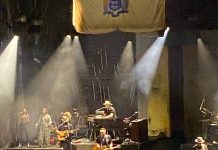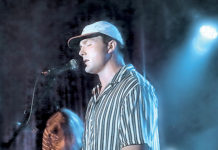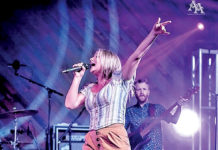By Charles B. Rubinstein
‘The secret of life is honesty and fair dealing;
if you can fake that, you’ve got it made.”
–Groucho Marx
Wine fraud comes in many forms on both large scale and small scale.
Large-scale fraud is concentrated on wine made for mass-market sales. Well-known companies have been convicted of fraud or attempted fraud for blending less expensive wine or grapes into hundreds of thousand bottles of more expensive wine.
Small-scale fraud is concentrated on rare bottles of wine selling for what in some cases are astronomical prices. According to Wine Spectator, “some experts suspect that as much as 5 percent of the wine sold in secondary markets could be counterfeit.” Secondary markets refer to auctions and peer-to-peer individual sales.
The history of wine fraud dates back to Roman times. Fraudulent wine was so widespread that the nobility were never sure that the wine they were serving was genuine.
How to detect wine fraud is not a simple matter, particularly in sales of rare wines. Large-scale fraud, if found, is detected by government agencies or an official group charged with overseeing enforcement of the rules and regulations pertaining to a wine region. Detection can come from a routine audit of the paperwork at a winery. Not so the case with rare wine sales. Proving the wine is not what it is claimed to be usually takes a lot of money on the aggrieved buyer’s side. It is better if the buyer does his or her homework before purchase.
Consider what happened at an auction held on April 25, 2008 by Acker Merrall & Condit at Cru, a restaurant in New York City. Among the wines scheduled to be offered by a collector were 97 bottles of what was purported to be rare wines from the outstanding Domaine Ponsot in Burgundy. John Kapon, president of the auction house, had been forewarned in a telephone conversation by Laurent Ponsot, proprietor of the Domaine, that some of the bottles were counterfeit and others were suspect. What Ponsot didn’t tell Kapon was that he was flying to New York City to attend the auction so that he could find out the source of the wines. Moments before the time came to auction the wines, Kapon announced that the 97 bottles were withdrawn. The attendees were reportedly chagrined, but they were saved from being victimized.
As reported by Michael Steinberger in the July 2012 issue of Vanity Fair, the consignment of 97 wines included a 1929 Clos de la Roche, that the Domaine did not produce under its own label until 1934, and 38 bottles of Clos Saint-Denis from the years 1945 through 1971. The winery had not started making Clos Saint-Denis until the 1980s.
Two auctions of wines in 2006 brought in a total of $35.3 million. Collector Rudy Kurniawan was found guilty last year of counterfeiting wine and various related schemes in connection with the sale. Earlier this month, he was sentenced to 10 years in federal prison, ordered to forfeit $20 million and pay restitution of $28 million to those defrauded.
Kurniawan is not the only counterfeiter to make an error that could be somewhat easy to uncover. Other cases have been solved because of simple mistakes. For example, in one case the year stamped on the cork did not match the year on the label, in another case a computer was used to improperly make the label and in still another case the bottle was clearly not old enough. Counterfeiters buy empty bottles of the best wines in the best vintages with intact labels, particularly older bottles, to avoid the latter error. Look no further than the market price for empty bottles to see the proof. Prices are abnormally high. An empty bottle of 1982 Château Lafite Rothschild fetches an astounding $1,500. A full bottle is selling for $3,723 on average.
Unfortunately most cases of fraud are difficult to solve. Tasting is rarely the way to go to determine the authenticity of a wine. The problem is not only the subjectivity involved. Rather, it is because once the bottle is opened, its value plunges.
Science has made a contribution to avoid that roadblock by using gamma rays. The level of gamma rays emitted from a bottle of wine can provide a clue to when a wine was bottled. If it was bottled before 1945, there shouldn’t be any trace of cesium 137 present because there was none in existence on the earth prior to the first atomic bomb explosion.
This technique helps in the fight against fraud, but it has limited application. There is still nothing better than an educated consumer who does the appropriate research before purchase. Caveat emptor should be the guiding principle.
If you have questions or comments about wine write to me at The Two River Times or email me at trtwineman@aol.com.
Pick of the Bunch
Highly Recommended
2012 Villacreces Pruno, Ribera del Duero ($17)
2007 Guigal Châteauneuf du Pape, Southern Rhône ($42)
2012 Domaine Drouhin Pinot Noir, Dundee Hills ($50)
Recommended
2012 Kendall Jackson Chardonnay Grand Reserve, Central Coast ($15)
2012 Gunderloch Jean Baptiste Riesling Kabinett, Rheinhessen ($17)
2012 Alice & Olivier de Moor Bourgogne Aligoté ($25)














